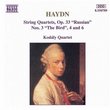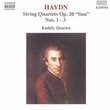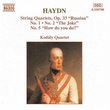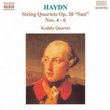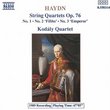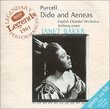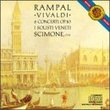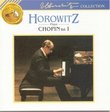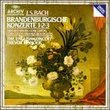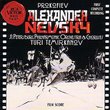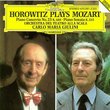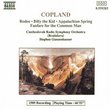| All Artists: Franz Joseph Haydn, Kodaly Quartet Title: Haydn: String Quartets, Op. 76, Nos. 4, 5 and 6 Members Wishing: 0 Total Copies: 2 Label: Naxos Release Date: 9/4/1992 Genre: Classical Styles: Chamber Music, Historical Periods, Classical (c.1770-1830) Number of Discs: 1 SwapaCD Credits: 1 UPC: 730099531528 |
Search - Franz Joseph Haydn, Kodaly Quartet :: Haydn: String Quartets, Op. 76, Nos. 4, 5 and 6
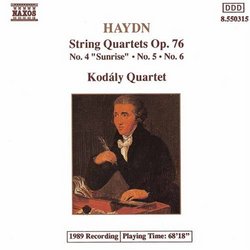 | Franz Joseph Haydn, Kodaly Quartet Haydn: String Quartets, Op. 76, Nos. 4, 5 and 6 Genre: Classical
![header=[] body=[This CD is available to be requested as disc only.]](/images/attributes/disc.png?v=4eeb5dd5) ![header=[] body=[This CD is available to be requested with the disc and back insert.]](/images/attributes/disc_back.png?v=4eeb5dd5) ![header=[] body=[This CD is available to be requested with the disc and front insert.]](/images/attributes/disc_front.png?v=4eeb5dd5) ![header=[] body=[This CD is available to be requested with the disc, front and back inserts.]](/images/attributes/disc_front_back.png?v=4eeb5dd5) |
Larger Image |
CD DetailsSimilar CDsSimilarly Requested CDs
|
CD ReviewsHaydn's "Famous 30" Quartets Alan Lekan | Boulder, CO | 07/29/2005 (5 out of 5 stars) "This is general review of the Naxos series of Haydn's string quartets. You know the old saying, "you get what you pay for." This is usually true for sure ... but once in a while in life something comes around whose quality and value far exceed the price. Such is the case with the Naxos recordings of the Kodaly Quartet. These are performances of top caliber recorded with very good to excellent sound quality. But, where to start with so many Haydn quartets? One suggestion is to get the Naxos SETS of these works which are an even more stellar bargin. You can get them at rediculously low prices used on Amazon usually. But, if you are buying one CD at-a-time (which perhaps allows for more appreciation and slower savoring), you might focus on what is known as "Haydn's Top 30." This is a list of Haydn's quartets that are recognized by many experts as his finest: Op. 3 (no. 3,5) - Op.9 (no. 2) - Op. 17 (no. 5) - Op. 20 (no. 4,5,6) - Op. 33 (No. 2,3,6) - Op. 50 (no. 6) - Op. 54 (no. 1,2,3) - Op. 64 (all) - Op. 74 (no. 1,2,3) - Op. 76 (all) - Op. 77 (no. 1,2). Quartets prior to Op. 17 have more of a simpler, pleasant "galante" style ... Op. 20 sees Haydn fully in his "Storm & Stress" period with bold harmonies and dynamic rhythms ... By Op. 33 Haydn had moved on from the pre-Romantic-era emotive composing of Op. 20 and adopted a more lyrical style .... the quartets of Op. 64 have a really gorgeous and relaxed style ... then in Op. 76 & 77 we see the pinnacle of Haydn's quartet craft late in his life with quartets rich in intelligent form, complex part writing and more grand 'symphonic' harmonies - part due to his writing for large London audiences. A good place to start is to get one CD each from Haydn's early, middle and late periods - like Op. 3, Op. 33 and Op. 76 - and see the development that occured as Haydn literally gave birth to the modern string quartet. " Exploring the Haydn Quartets -- Op. 76 nos. 4-6 Robin Friedman | Washington, D.C. United States | 10/05/2004 (5 out of 5 stars) "Joseph Haydn wrote the six string quartets of opus 76 in 1797 when he was at the height of his powers. The quartets were dedicated to Haydn's patron, Count Edody, and are known as the "Erody" quartets. The first three quartets of opus 76 appear on a separate Naxos CD by the Kodaly Quartet. In fact, the Kodaly Quartet has recorded the entire series of Haydn quartets at a budget price. The opus 76 quartets in particular are music-making at its highest level. These quartets are engaging and accessible to hear and to play (they were composed to be played) and are yet filled with imagination, inventiveness, and musical content. In describing the opus 76 quartets, Karl Geiringer writes in his "Haydn: A Creative Live in Music" (p. 321) that "[e]verything here is condensed and intensified, the expression more personal and more direct." This award-winning CD by the Kodaly Quartet includes the 4,5, and 6th quartet and is a joy. The quartet no. 4 in B-flat major is known as the "Sunrise" after the running, rising theme in the first violin, set over heavy chords, with which it opens. The first movement, marked allegro con spirito, is a movement of contrasts. As do several other movements on this CD, it features alternating sections of fast and slow sections, rising and falling solo themes, and ensemble and solo playing. The second movement, marked adagio, continues to alternate solo passages for the violin with intricate playing for the entire ensemble. There is also a lovely theme deep in the lower register of the cello. This is a slow, sad movement. The third movement is a minuet which features echoing falling two-note figures heavily accented at the end of each phrase. The trio continues the pattern established in the earlier movements by having a solo theme sing out over chords in the remainder of the ensemble. The final movement is a rondo which opens with a whimsical, song-like theme played in the ensemble. As the movement progresses, the tempo increases, and the quartet ends humorously with a whirwind version of the rondo theme. The fifth quartet in D major is unique in that each of the four movements develop essentially the same thematic material. The opening movement is an allegretto which opens quietly and lyrically in the violin. Here again, the movement dramatically picks up in tempo near the conclusion. The second movement of the work marked "Largo cantabile e mesto" (very slow, singing, and troubled) is the highpoint of this work. The slow movement is substantially longer than the opening movement, which is itself highly unusual in a composition of this period. The movement opens with a slow stately theme followed by an intense middle section in different harmonies and then a return of the opening material. The minuet opens in the alto voice of the strings, but the most striking feature of this movement is the ruminative, running solo for the cello in the trio. The finale, marked presto, consists of a running theme over a brushing figure in the strings. It reminded me of a Russian folk tune and of Beethoven's middle quartets. The sixth and final quartet of opus 76 is in E-flat major and brings an extraordinary end to the set. The first movement, marked allegro-allegretto, is a set of variations based on a call and response theme. The variations feature solo instruments embellishing the theme as played by the ensemble. Again, this movement masterfully alternates fast and slow sections and ensemble and solo playing. There is a great deal of counterpoint throughout. The second movement marked "Fantasia:Adagio" is full of adventurous harmonic writing based upon rapid and ambiguous movements from one key to another. In much of this movement, Haydn dispensed with the use of a key signature, giving both the music and the notation a strikingly modern flavor. The third movement, a minuet, opens with a theme with many turns and twists for the violin in its upper register. But, again, the striking portion of this movement is in the trio. Haydn writes it in an old form called the Alternativo. The pattern is a rising heavily rhythmic passage in the cello playing the major scale, followed by a descending passage playing the scale. This is a delight to follow when one is prepared for it. The finale, allegro spirituoso, is based upon a falling figure. It is light and rapid and shows Haydn's mastery of counterpoint. The music of these quartets, and of the earlier three quartets of opus 76 is inexhaustible. This CD is an outstanding introduction to chamber music and to the music of Haydn." Exemplifying the full extent of Haydn's virtuosity D. Jack Elliot | Omaha, Nebraska | 07/19/2006 (4 out of 5 stars) "For me it is the late Haydn string quartets, more so than the late symphonies, that afford us a full demonstration of his consummate compositional mastery. For as good as the London Symphonies are, if you listen to them alongside Mozart's great symphonies they really do not quite measure up; but the late quartets are second not even to Mozart's best works in the genre, endowed as they are with magnificent complexity, ingenious subtlety, and profound sophistication.
The Op. 76 quartets are the place to start in listening to Haydn's quartets. He sometimes equaled these exemplary compositions, in earlier works as well as later ones, but he never bettered them. Op. 76 belong to that rarefied list of powerful, progressive masterworks written at the end of his life that includes the Trumpet Concerto, The Creation, Paukenmesse, and, yes, the aforementioned London Symphonies. (Especially beautiful on this disc is the adagio of the E-flat quartet: harmonically adventurous, mysterious, and captivating, I've returned to it more than once.) I have elsewhere stated my preference and conviction for authentic, "period instrument" performances of these works; while I do prefer the accounts of the Quatuor Mosaïques to these readings, then, I at the same time insist that these are interpretations not to be missed. Readings of the Baroque and Classical literature on modern instruments can still be very effective, if an awareness of the character and function of timbre and sonority in those historical musical languages is incorporated into playing of skill and good judgement (the academy of St. Martin in the Fields under Neville Mariner, for example, have committed excellent performances of the late Mozart symphonies to disc on modern instruments). The Kodály Quartet are a first-rate ensemble and they dig into these pieces with expertise and enthusiasm. And for only ten dollars per disk on Naxos, you really mustn't pass on these recordings. " |

 Track Listings (12) - Disc #1
Track Listings (12) - Disc #1